SUMMARY
I designed BlueTrain, a networking and gig-finding app for jazz musicians. I conducted 30 interviews with various user types, distilled insights into user personas, and mapped journeys around discovery, credibility, and connection. I prototyped in various fidelities, ranging from sketches to Figma flows and iterated on features with continuous user feedback. The end result was a networking app with customizable profiles, gig posting/finding, a forum, and community-building tools.
BACKGROUND
For 10 years now, I’ve been playing the trombone. Though I didn’t go down the professional musician route, it’s still one of my favorite things to do in the world. It’s no secret that the life of a musician is a difficult one, so ever since I became a product designer I’ve wanted to create a tool to make a jazz career easier.
THE PROBLEM
Through conversations with my friends pursuing music degrees, I began to piece together a potential pain point in the industry.
It seemed like the professional jazz community was a tight circle. Less experienced musicians would have to find a way to “break into” this circle to gain access to professional opportunities, and doing so was difficult without inside help.
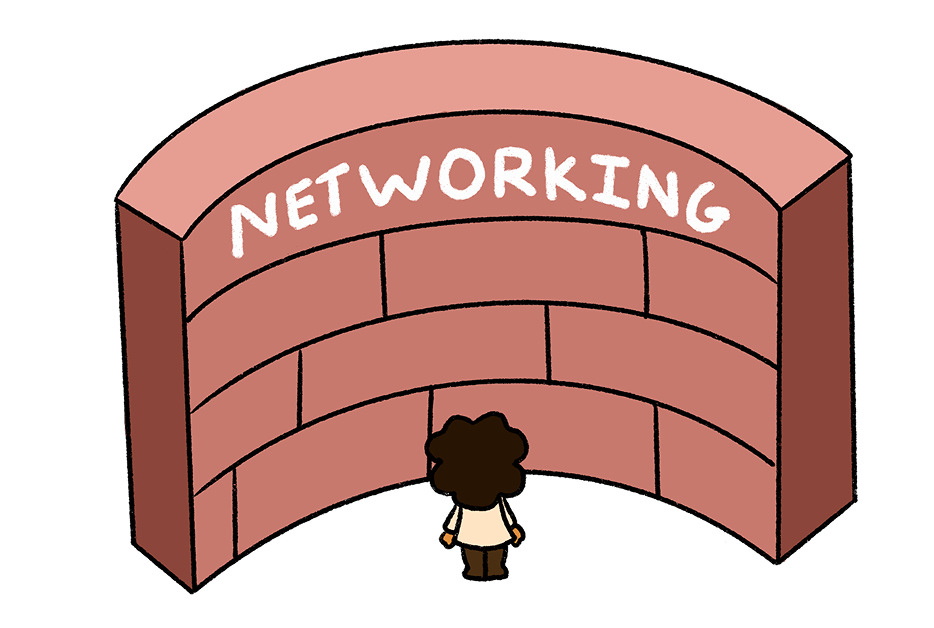
My hypothesis: success in the jazz world relies on interpersonal connections. Getting gigs or job opportunities depends heavily on referrals from established figures in the jazz sphere.
USER RESEARCH
For my user interviews, I spoke to 15 college students pursuing a music degree, 8 professional jazz musicians, and 7 casual jazz musicians. Insights from these interviews were distilled into 3 user personas.

Zoe, 21
Early Stage Professional
GOALS
Build connections and reputation with performances.
MOTIVATIONS
Break into the professional jazz community and gain visibility.
PAIN POINTS
Limited awareness of gigs; few direct channels to reach organizers.
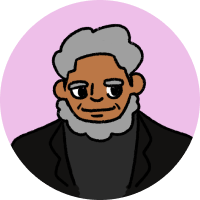
Joe, 54
Established Professional
GOALS
Recruit reliable, skilled musicians for gigs.
MOTIVATIONS
Maintain reputation by working with competent musicians.
PAIN POINTS
No time for auditions; must rely heavily on personal referrals.
GOALS
Play music for fun with others in the community.
MOTIVATIONS
Enjoyment of performing and connecting through music.
PAIN POINTS
Difficulty gauging how serious a gig is, so it's hard to determine fit
Based on these personas, I formulated a HMW statement to frame my ideation around:
How might we give musicians of all levels clearer visibility into gigs while helping organizers find the right talent?

Using this HMW statement, I began to ideate different features for a jazz networking app. I grouped these ideas based on impact, feasibility, and confidence.
The strongest ideas were the user profile, map-based gig finding, and star review system. I created low-fi sketches for these features for the first round of user testing.
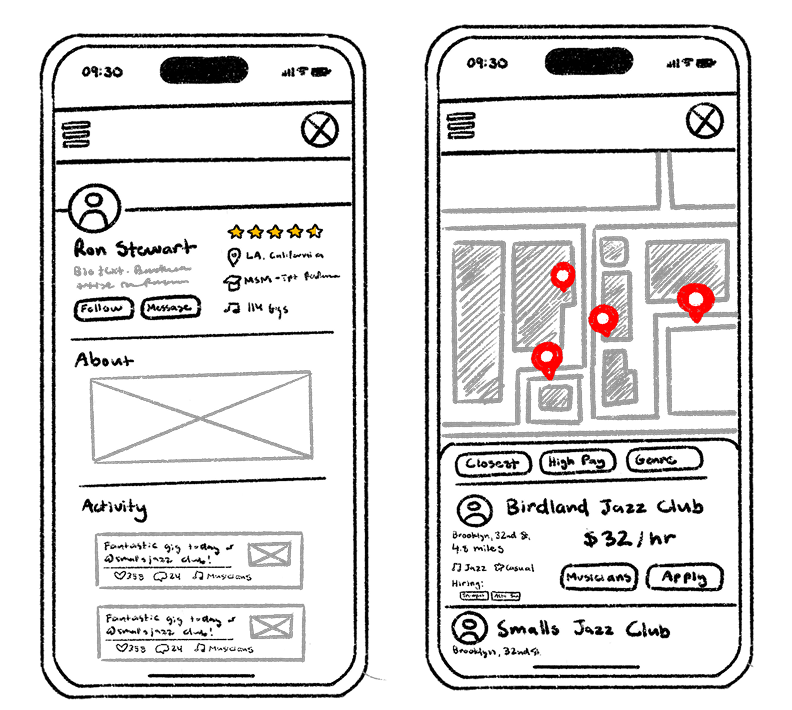

Reception to the map feature was mixed. While location mattered to students, it wasn’t the only consideration, and the map overemphasized geography at the expense of other key details.
I iterated on the design to show gigs in a list format, with cards to make important information immediately visible.
From the user feedback, the star review system proved unpopular. Organizers felt it was too general to assess fit, while students worried that unfair low ratings could harm their chances for months.
To address this, I removed the star system and added a section to the gig sign up form to submit a short playing sample, providing the value of an audition without the need to host or attend one.

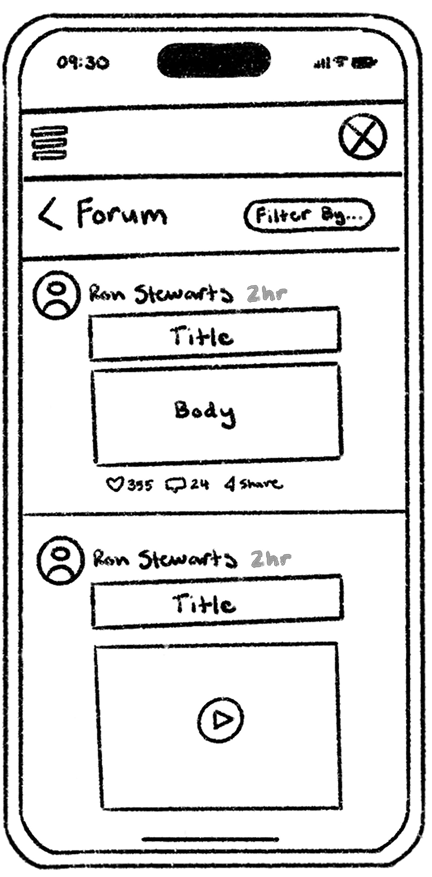
Some were also worried that a jazz networking app might erode the value of building connections face-to-face, which is essential to the strong sense of community within the jazz scene.
To encourage use of the app for community building, I created a forum page where users can ask for advice, meet new musicians, promote their work, and get feedback.
With the insights from both rounds of user testing, I took the project to Figma for the final prototype
FINAL DESIGN
With that, let’s take a look at the final design and how the features designed thus far work together.
Put Yourself Out There
Showcase your skills and experiences on your profile, and connect with fellow musicians.

Find Opportunities
Discover gigs tailored to your preferences of pay, location, genre, and skill level.
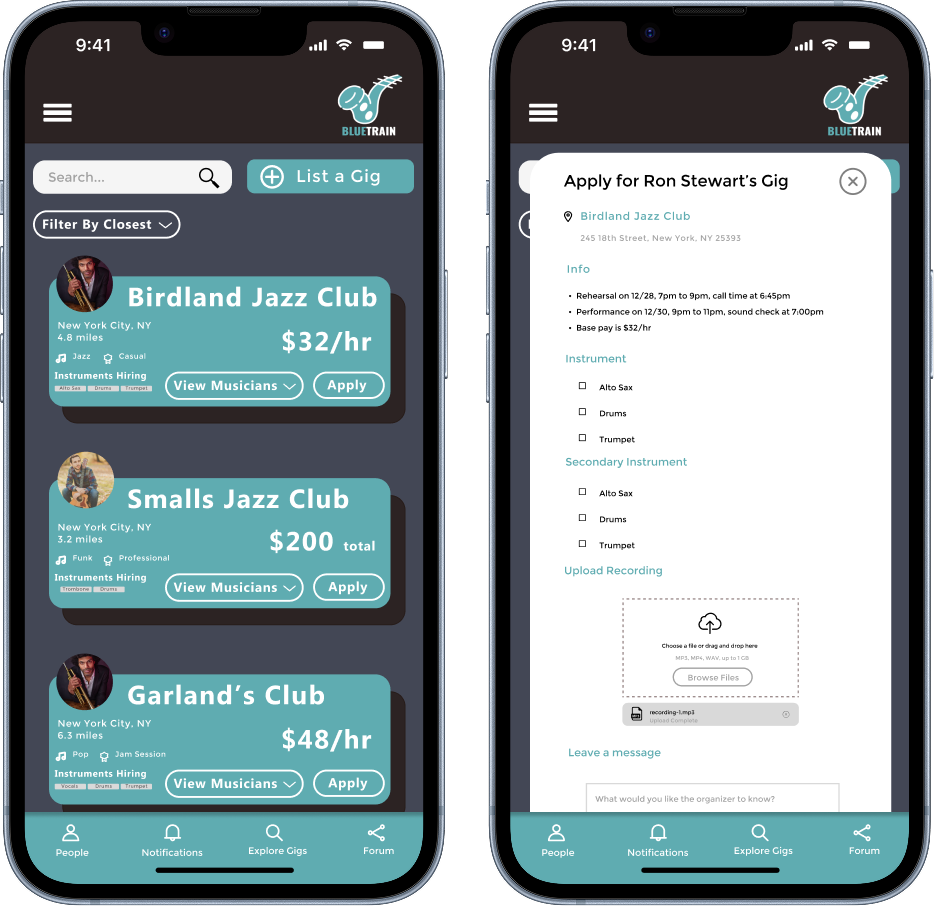
Find Talent
Hire the right musicians with confidence through detailed profiles and playing samples.
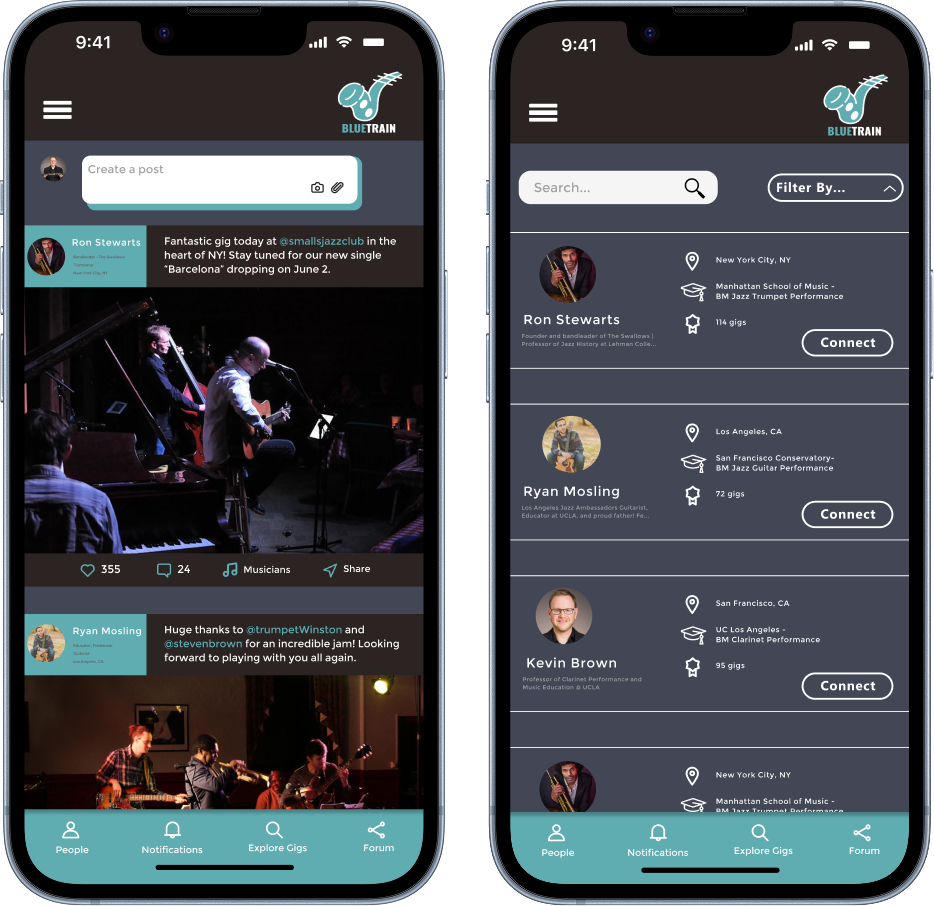
Build Community
Ask questions, share your work, and connect in a supportive online community.

NEXT STEPS
I am currently working on building BlueTrain into a functional app. I aim to soon launch a closed beta with a small cohort of jazz musicians to gather data and test real-world adoption.
.png)



.png)








